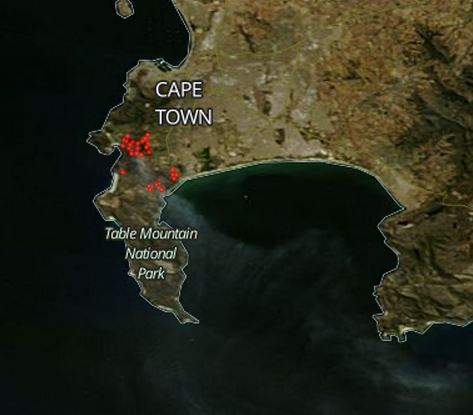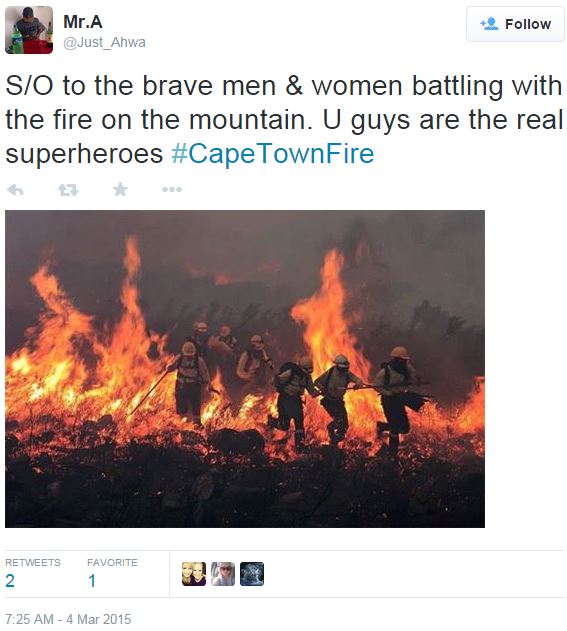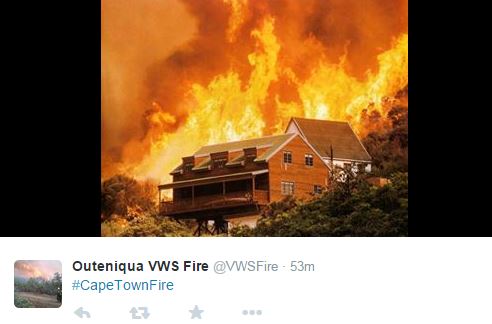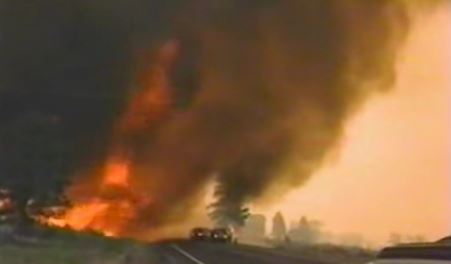
About 500 people were forced to evacuate as fires near Cape Town, South Africa burned for a fourth day on Wednesday. Firefighters said a small amount of rain did not have any significant effect on the 12,000-acre blaze that started on March 1. There are no reported fatalities, but 52 people from an old-age home had to be treated for smoke inhalation. Homes, offices, historic wine farms and a hotel lodge were damaged or destroyed.
An excerpt from an article at Blolomberg:
While some fires have been contained, they continue to burn in the Lakeside, Constantia Valley and Clovelly areas and are expected to take until the end of the week to extinguish, according to city officials and Working on Fire, the national fire management agency. Six helicopters and two planes dumped 2.2 million liters (580,000 gallons) of water in more than 2,000 drops, helping to stop the spread of flames in areas inaccessible to fire-fighting crews and their vehicles. Helicopters were grounded in the late afternoon on Wednesday due to strong wind and poor visibility.
An excerpt from an article at News24:
[Wednesday] morning, the City of Cape Town’s Fire Safety Division conducted a survey to determine exactly how many properties have been affected since the fire started in the early hours of Sunday 1 March 2015 above Boyes Drive in Muizenberg.
Staff have confirmed that 13 properties have been affected, including the Tintswalo Lodge at the foot of Chapman’s Peak. Three of the properties have been completely destroyed: two in Constantia and one in Noordhoek.
The video below shows a pretty cool fire whirl. I would not call it a “fire tornado”, or “firenado”, as some are. THIS is a firenado.

The six photos below were taken by Clint Sutton on Tuesday. Thanks Clint.
Continue reading “Fires force 500 to evacuate in South Africa”






